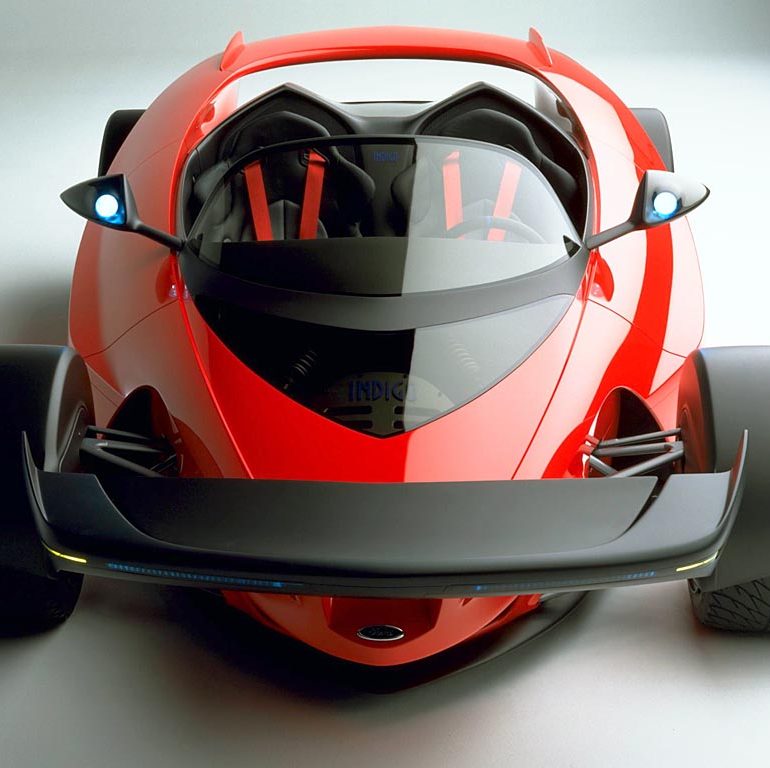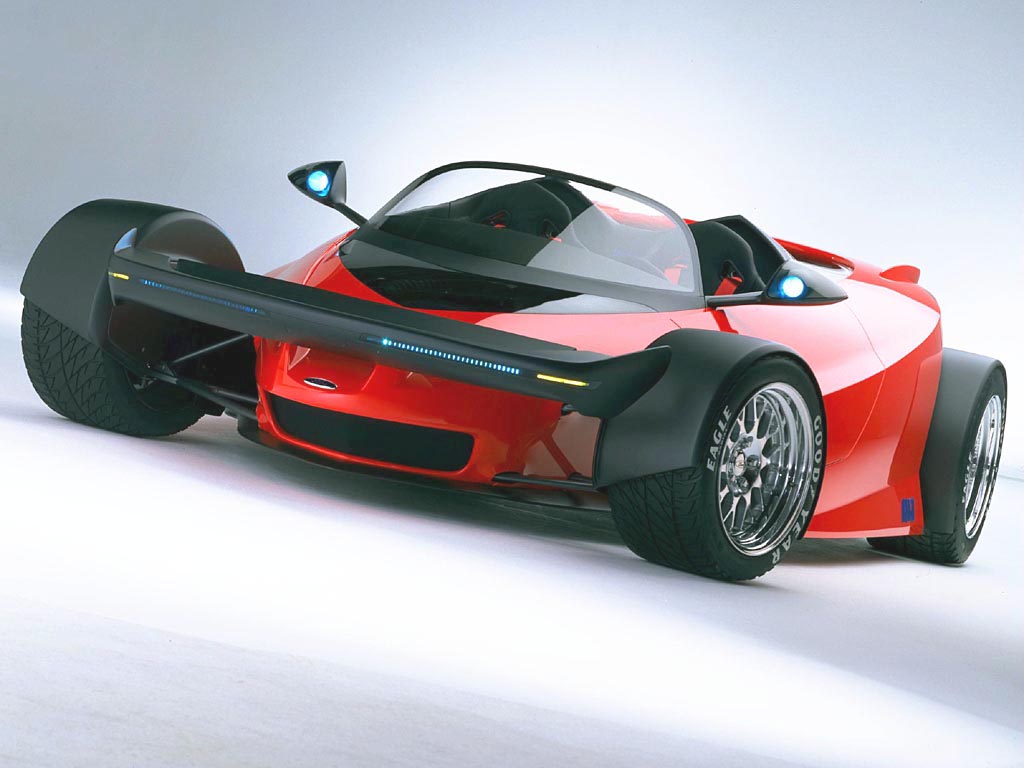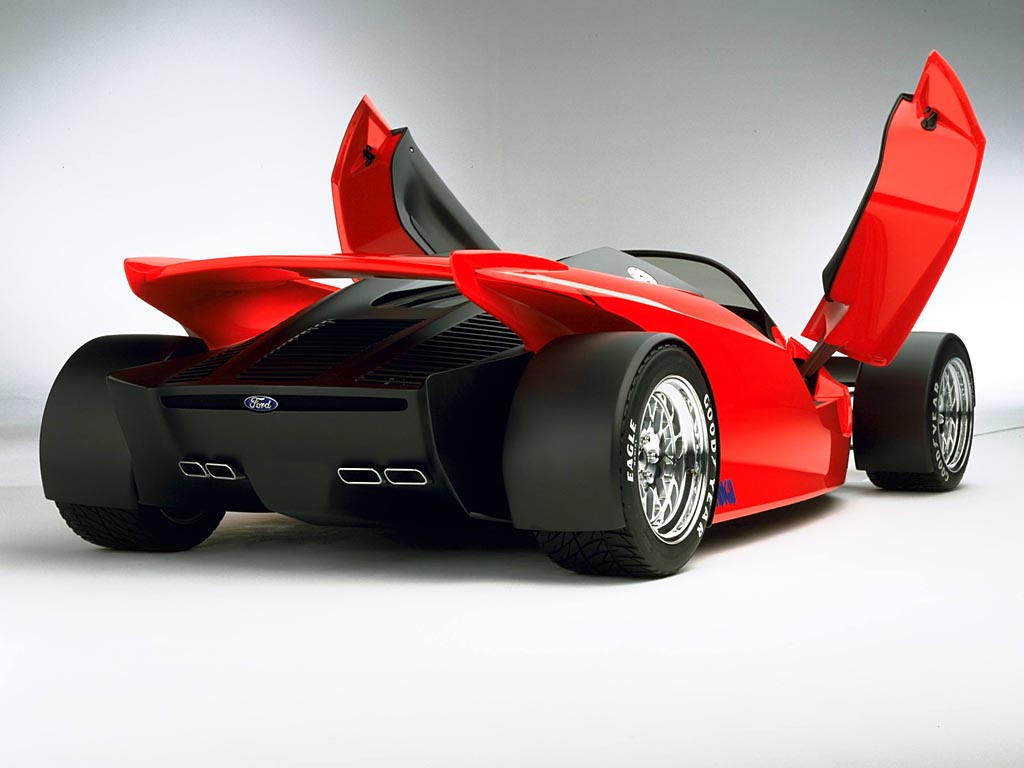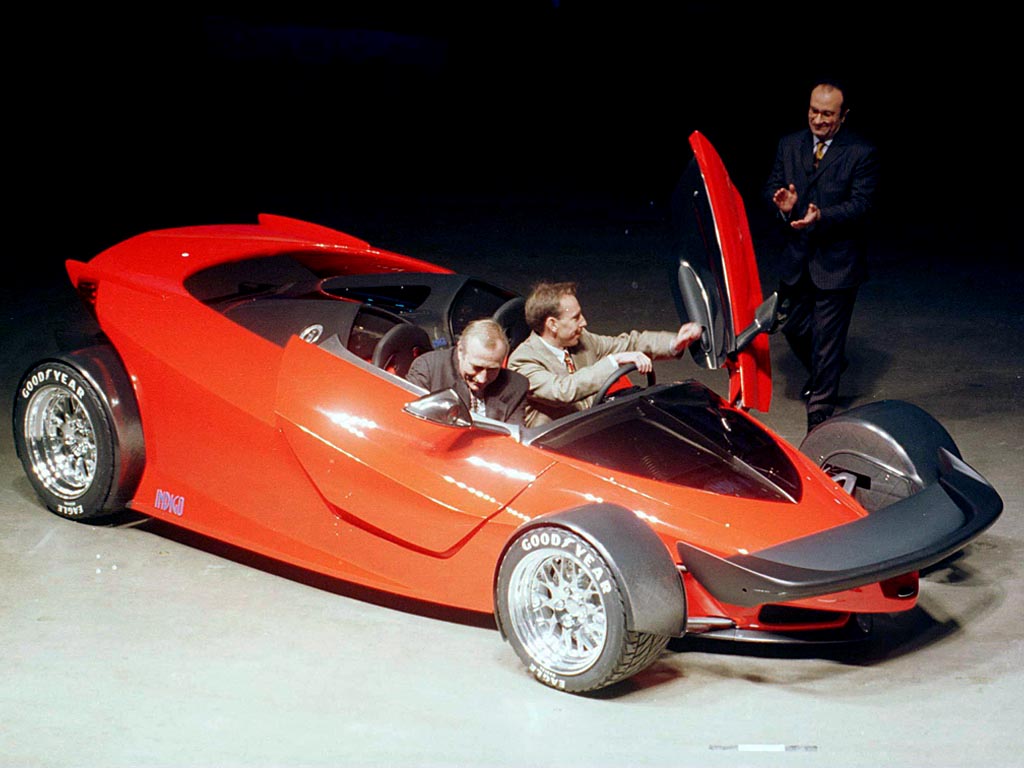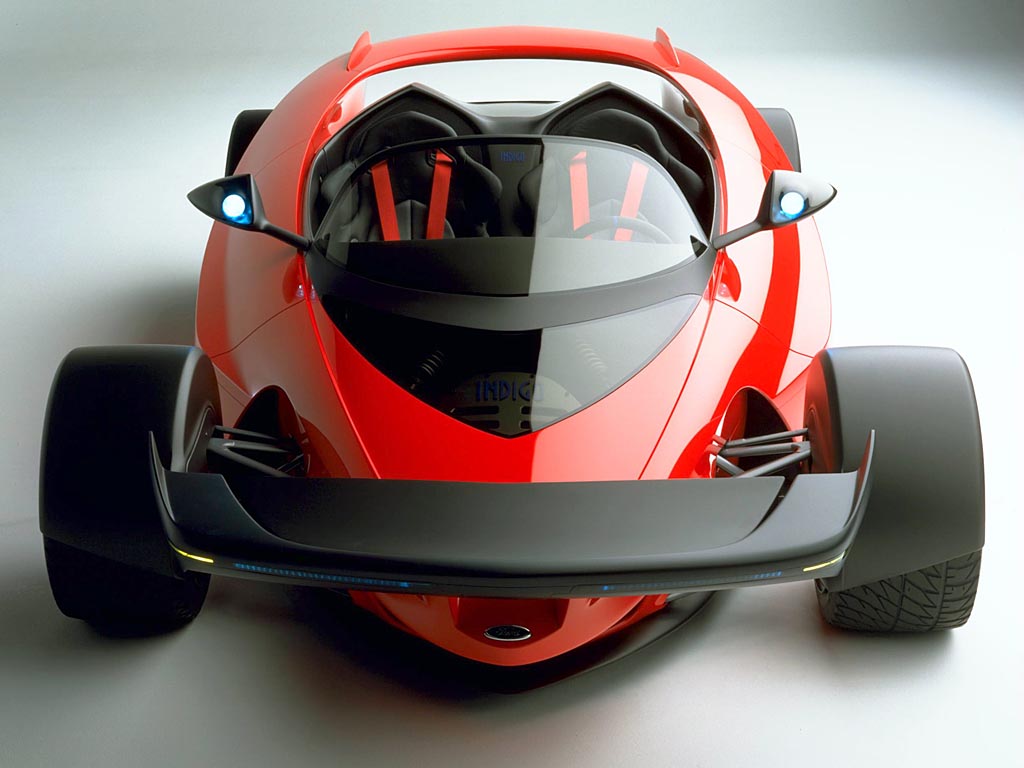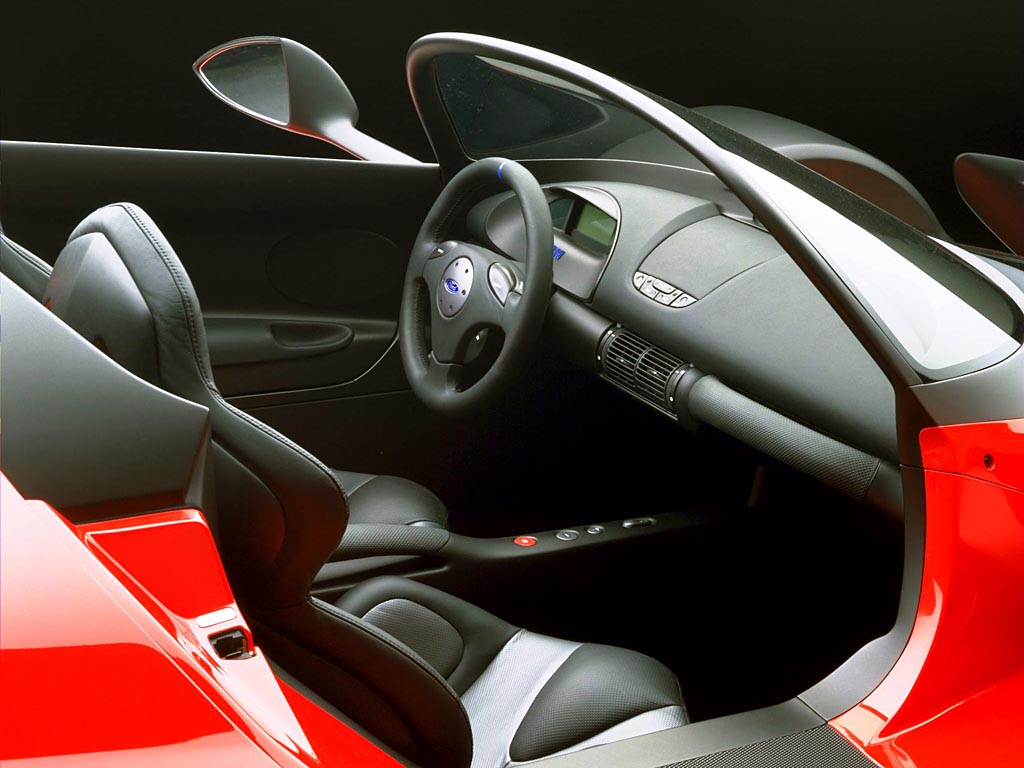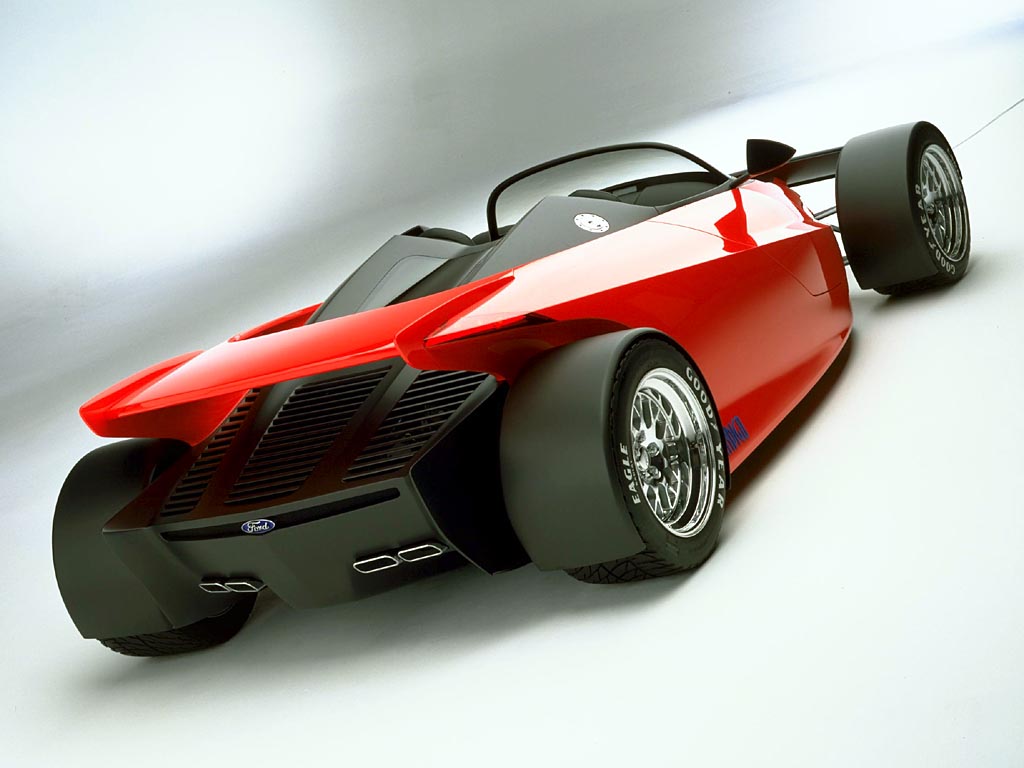1996 Ford Indigo Concept
The Ford Indigo is a high performance, V-12 concept sports car that takes its design and technology inspiration from some of the fastest cars in the world, Indy car and Formula 1 racing cars.
The Indigo combines Ford and primarily Indy car technologies and practices in the areas of materials, construction techniques, powertrain and aerodynamics to create a new dimension in driving excitement by bringing the thrill of the race track to the street.
But the Indigo is much more than just an exciting new show car. Two versions of the car have been produced: a non-driveable Show car that will tour the major international auto shows in 1996; and a fully-functional, engineered and driveable model, nicknamed the Go car by the Indigo team.
The Go derivative of the Indigo features a monocoque chassis which was designed and manufactured using current Indy car build practices. The chassis was developed in conjunction with Reynard Racing Cars, the UK-based specialist supplier and winner of the 1995 CART/PPG Indy Car World Series Constructor’s Championship.
The chassis consists of a specially designed central tub formed of a lightweight carbon fiber, aluminum honeycomb composite material. This monocoque chassis differs from a conventional chassis in that it is a one-piece, highly-efficient racing-inspired structure that both forms the Indigo’s interior and has the front suspension and running gear attached to it.
The rigid construction of the chassis cocoons the driver and passenger in a cell-like structure, with the wide air intake ducts located in the deep rocker panels providing an exceptional level of side-impact protection. Many of the composite components are also being studied to examine their structural properties under stress.
The front suspension — Indy car-type double wishbones with pushrods operating inboard coil-over shock absorbers — is fitted directly to the chassis tub. The rear suspension also features double wishbones with pushrods and inboard coil-over shock absorbers and locates directly to the transaxle.
Both front and rear suspensions are formed from the same high strength, aero section chrome moly steel tubing that Reynard uses on its Indy cars. The rear suspension arms and geometry are virtually identical to those of an Indy car, while the Indigo’s two-passenger tub required the front suspension arms be shorter and have a slightly different geometry than that found on the racing cars.
The Indigo is equipped with an all-new V-12 engine developed by the Core & Advanced Powertrain Engineering team within Ford’s Advanced Vehicle Technology group, the organization responsible for generating new technologies for future production vehicles.
The V-12 is a 6.0-liter, four-cam, 48-valve, 60 degree engine which currently has an output of 435 hp (SAE net) at 6,100 rpm and 405 lbs-ft torque at 5,250 rpm. The engine is still undergoing development testing, but these are the expected final horsepower/torque levels when the engine is tuned to meet current and future projected emissions levels running through catalysts fitted to the stainless steel exhaust system.
The basis for the V-12 is the current production 3.0-liter Duratec V-6 engine used in the 1996 Ford Taurus and Mercury Sable. It uses the same bore and stroke dimensions (89.0 mm x 79.5 mm) as the Duratec, and also shares its pistons, rings, rods, valves, valve seals, valve springs and retainers.
However, the V-12 block and cylinder heads are all-new, cast from 356-T6 aluminum alloy by Cosworth in Great Britain. The cylinder heads retain the Duratec’s combustion chamber and exhaust port design. The intake ports incorporate a new, tumble-port design that creates low-rpm, intake-charge turbulence without the need for throttling one of each pair of intake valves.
The Indigo utilizes a longitudinally-mounted, modified Reynard Indy car transaxle. This unit has six forward gears and a reverse, and features a racing-style, manually-operated carbon clutch. The forward gears are selected sequentially by a an electronic, hydraulic shifter.
Buttons on the front of the Nardi steering wheel signal the system to upshift, while alternate buttons on the back of the wheel control downshifts. The clutch must be used on all shifts.
The car has undergone wind tunnel testing. The results show that enough downforce is being generated by the wings, underbody diffuser and overall body shape to enable the Indigo to corner at a projected lateral acceleration of 1.2g.
The building of the Indigo — which took just six months to complete from the first computer design rendering to a driveable car — was primarily the responsibility of Ford’s Advanced Design team and Advanced Vehicle Technology group, suppliers Reynard Racing Cars and ASC, with Ford’s New Concepts Organization overseeing the management of the project. Many other Ford suppliers were also involved in the construction of the car.
Story by Ford
In Detail
| submitted by | Richard Owen |
| built at | Detroit, Michigan, USA |
| price $ | $ Prototype |
| engine | V12 |
| valvetrain | DOHC 4 Valves / Cyl |
| displacement | 5935 cc / 362.2 in³ |
| bore | 89.0 mm / 3.5 in |
| stroke | 79.5 mm / 3.13 in |
| compression | 10.0:1 |
| power | 324.4 kw / 435.0 bhp @ 6100 rpm |
| specific output | 73.29 bhp per litre |
| bhp/weight | bhp per tonne |
| torque | 549.1 nm / 405.0 ft lbs @ 5250 rpm |
| body / frame | Cabon Fibre |
| driven wheels | Mid Engine / RWD |
| front tires | F 335/30ZR-17 |
| rear tires | R 355/35ZR-18 |
| front brakes | Vented Discs |
| f brake size | x 335 mm / x 13.2 in |
| rear brakes | Vented Discs |
| r brake size | x 356 mm / x 14.0 in |
| front wheels | F 43.2 x 58.4 cm / 17.0 x 23.0 in |
| rear wheels | R 45.7 x 63.5 cm / 18.0 x 25.0 in |
| steering | Rack & Pinion |
| curb weight | 1043 kg / 2299 lbs |
| wheelbase | 2896 mm / 114.0 in |
| front track | 1758 mm / 69.2 in |
| rear track | 1702 mm / 67.0 in |
| length | 4453 mm / 175.3 in |
| width | 2052 mm / 80.8 in |
| height | 1003 mm / 39.5 in |
| transmission | 6-Speed Manual w/sequential shift |
| gear ratios | :1 |
| top speed | ~273.6 kph / 170.0 mph |
| 0 – 60 mph | ~3.9 seconds |
| 0 – 1/4 mile | ~12.0 seconds |


